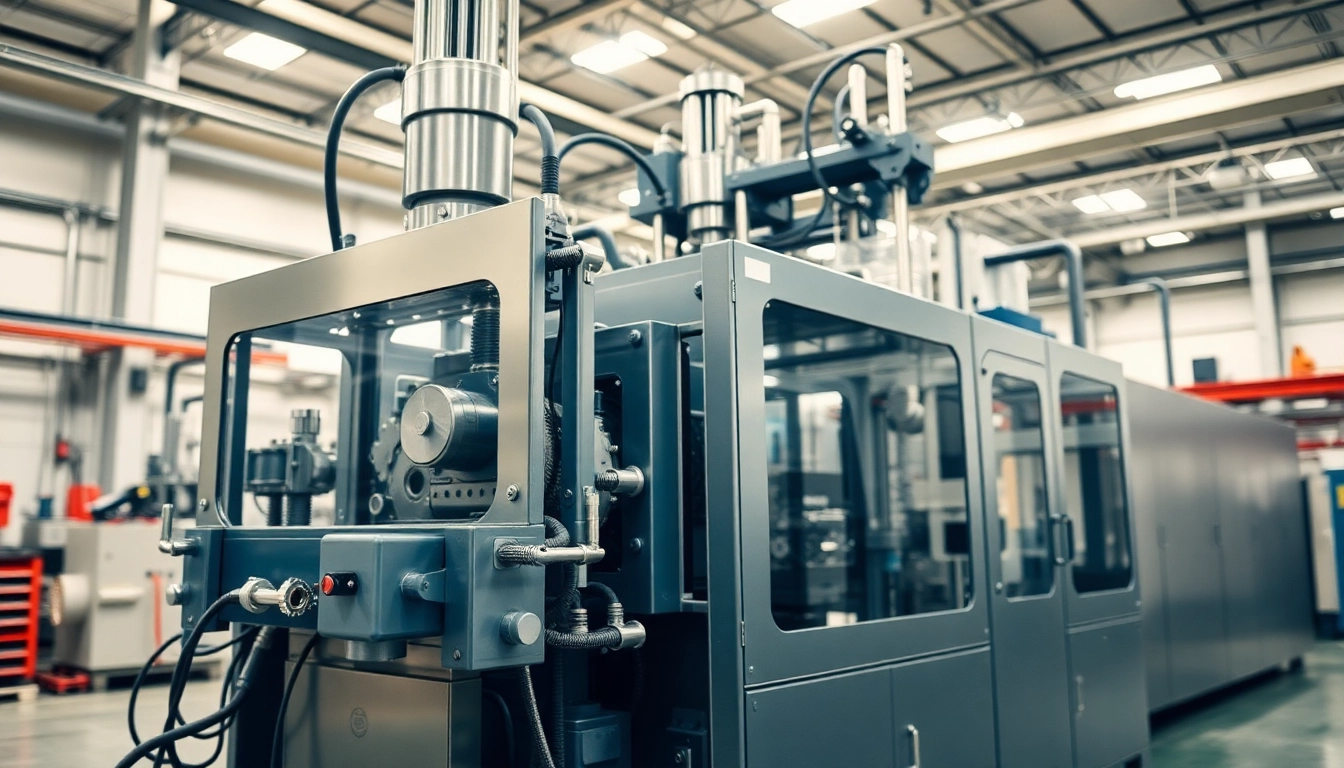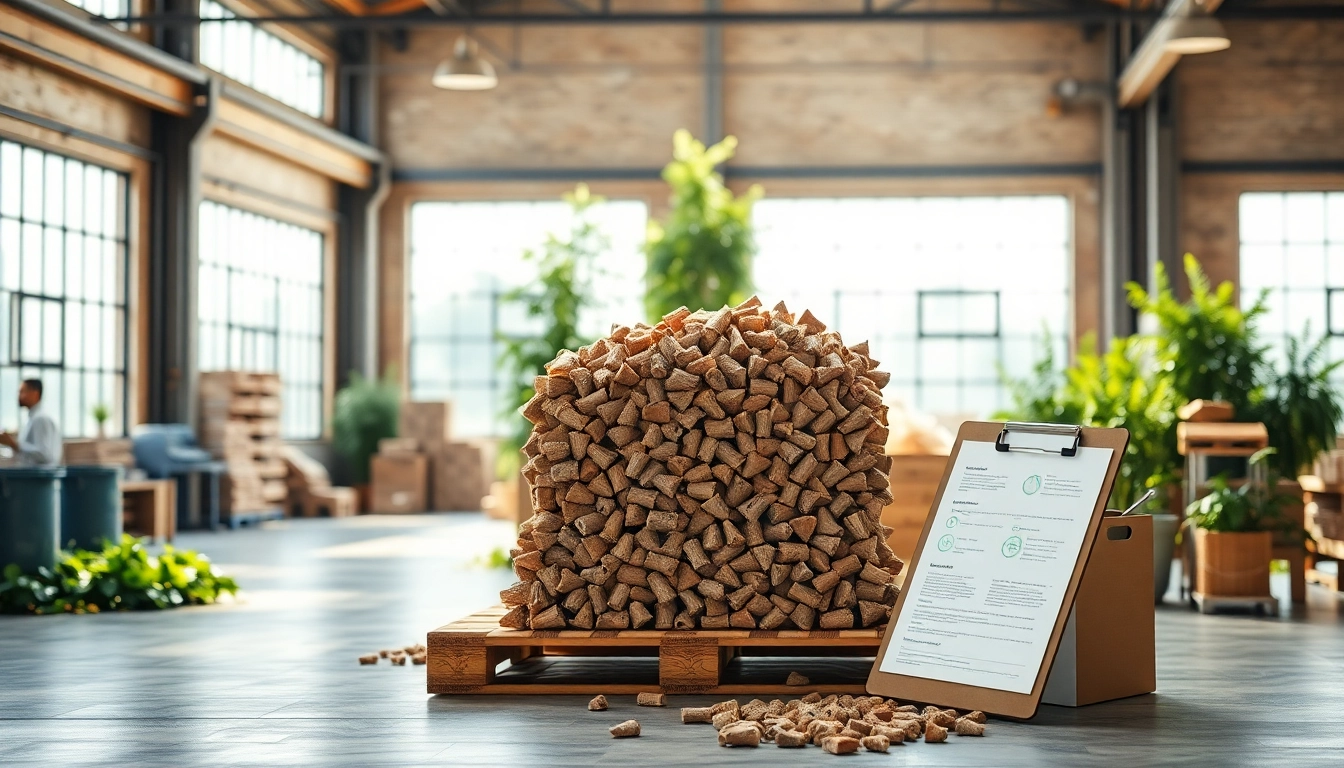Introduction to Blow Molding Machines
Blow molding machines are essential in the manufacturing industry for producing a wide variety of hollow plastic products, including bottles, containers, and many other items. They utilize a unique method of shaping plastic by inflating a heated tube of thermoplastic into a mold, resulting in efficient and uniform shapes. The technology offers substantial advantages in production speed, versatility, and cost-effectiveness, making it a cornerstone in industries such as packaging, automotive, and consumer goods. Understanding the intricacies of Blow Molding Machine technology can significantly enhance operational efficiency and product quality.
What is a Blow Molding Machine?
A blow molding machine is a piece of equipment utilized to manufacture plastic items with hollow structures through a three-step process: heating, shaping, and cooling. The process begins with a parison (a preform tube of plastic) being extruded or injected into a mold. Compressed air is then blown into the parison, expanding it to conform to the shape of the mold. After cooling, the product is removed, resulting in a finished item ready for packaging or further processing. This method allows the efficient production of lightweight yet durable plastic items, leveraging varying types of plastics based on the required application.
Types of Blow Molding Machines
Blow molding technology is categorized into three main types, each serving different manufacturing needs:
- Extrusion Blow Molding (EBM): This method involves extruding a hot tube of plastic (parison) into a mold while being blown into shape. EBM is ideal for producing large containers and is commonly used for products such as plastic bottles and other hollow items.
- Injection Blow Molding (IBM): This method combines both injection molding and blow molding processes. First, a preform is injection molded before being transferred to a blow mold. IBM is effective for creating small, precise products, particularly in the medical and cosmetic sectors.
- Stretch Blow Molding (SBM): In this process, the preform is stretch-blown into the mold, resulting in stronger, thinner walls. SBM is prevalent in producing PET bottles, known for their clarity and mechanical strength.
Applications and Industries
Blow molding is widely utilized across various industries, catering to diverse applications:
- Packaging Industry: The most notable use of blow molding lies in producing containers, bottles, and jars for food, beverages, and household products.
- Automotive Industry: Components like fuel tanks, fenders, and dashboards are manufactured using blow molding due to their lightweight and durable properties.
- Consumer Products: From toys to appliances, a vast array of consumer items utilizes blow molded parts for aesthetic and functional advantages.
How Blow Molding Works
The Blow Molding Process Explained
The blow molding process can be broken down into a series of critical steps:
- Heating: The plastic resin is heated until it becomes pliable.
- Forming: The heated plastic is formed into a parison or preform, depending on the molding type.
- Molding: The parison is placed in a mold, and air is blown into it, forcing the plastic to take the shape of the mold.
- Cooling: The mold is cooled, solidifying the shape.
- Finishing: The finished product is ejected from the mold, inspected, and prepared for packaging or further processing.
Key Components of a Blow Molding Machine
The efficiency of a blow molding machine is determined by its key components, which include:
- Mold: The cavity where the product is formed. Molds are designed to create intricate shapes and sizes.
- Extruder: This component heats and forms the plastic into a parison for extrusion mold applications.
- Injection Unit: In IBM, this unit injects the molten plastic into the mold to create the preform.
- Control System: Modern machines use advanced control systems for precision in temperature, pressure, and timing throughout the process.
Advantages of Blow Molding Technology
Blow molding technology offers notable advantages, particularly in high-volume production:
- Efficiency: The process allows rapid production cycles, which significantly increases output rates compared to traditional methods.
- Material Utilization: Blow molding generates less waste compared to other methods, making it a cost-effective solution.
- Versatility: It supports various plastic types, including recyclable materials, enhancing its application range.
- Quality: The resulting products exhibit excellent strength and uniformity, essential in packaging and product design.
Choosing the Right Blow Molding Machine
Factors to Consider
When selecting a blow molding machine, manufacturers should evaluate several factors to ensure they choose the right unit for their operations:
- Production Volume: Understand your production needs, as high-output machines differ significantly from those designed for lower volumes.
- Material Compatibility: Consider the types of materials you will be processing and ensure the machine can accommodate them.
- Mold Compatibility: Assess whether existing molds can be used or if new molds are required, which can affect overall costs.
- Space Requirements: Ensure your facility has the necessary space for installation, operation, and maintenance.
Cost Analysis and Budgeting
Cost analysis is critical when investing in blow molding technology. The expenses vary based on machine type, size, and complexity. For example:
- Extrusion Blow Molding: On average, these machines can range from $30,000 to $300,000.
- Injection Blow Molding: The costs can be significantly higher due to complex machinery, ranging from $50,000 to $500,000.
It is vital to assess the long-term return on investment by evaluating production capabilities against initial purchase costs and potential savings through efficiency improvements.
Brand Comparisons and Recommendations
With numerous blow molding machine manufacturers in the market, businesses should consider established brands known for their reliability and technology advancements. Key brands include:
- Parker: Known for their robust solutions and customer support across multiple continents.
- Wilmington Machinery: Renowned for high-speed rotary extrusion blow molding systems.
- Bekum Maschinenfabrik: Offers innovative designs particularly focused on efficiency and environmental benefits.
Maintenance and Troubleshooting Tips
Routine Maintenance Practices
Regular maintenance is crucial for the longevity and performance of blow molding machines. Essential maintenance practices include:
- Cleaning: Regularly clean the molds and extruder to prevent material build-up that can affect quality.
- Lubrication: Lubricate moving parts as needed to minimize wear and tear.
- Inspection: Schedule periodic inspections to catch potential issues before they escalate, ensuring optimal operation.
Common Issues and Solutions
While blow molding machines are robust, they can experience common issues, including:
- Inconsistent Product Quality: This can be due to temperature fluctuations—ensure the heating elements are functioning correctly.
- Mold-Making Problems: If molds are not being filled correctly, check for blockages or inadequate air pressure.
- Mechanical Failures: Regularly inspect mechanical systems, and replace worn components promptly to avoid operational downtime.
Safety Protocols in Operation
Establishing safety protocols ensures a safe working environment for operators. Key practices include:
- Training: Provide comprehensive training on machine operation and emergency procedures.
- PPE Usage: Ensure operators wear appropriate personal protective equipment, including gloves and goggles.
- Emergency Stops: Ensure machines are equipped with accessible emergency stop buttons to halt operations if needed.
The Future of Blow Molding Technology
Innovations in Blow Molding Machines
The blow molding industry is continually evolving, with innovations focusing on efficiency, materials, and automation. Upcoming trends include:
- Smart Technology: Integration of IoT (Internet of Things) in machines allows real-time monitoring and predictive maintenance.
- Increased Automation: Automation technologies reduce labor costs and increase precision in production.
- Advanced Materials: Research into biodegradable and recyclable materials impacts future production methods and sustainability practices.
Sustainability and Environmental Impact
Sustainability is a significant focus in modern manufacturing, with blow molding adopting practices to minimize environmental impact:
- Recycled Materials: Utilizing recycled plastics to create new products helps reduce waste.
- Energy Efficiency: New machinery designs aim to lower energy consumption during production.
- Reduced Waste: Blow molding typically generates less scrap compared to traditional molding techniques, contributing to a lower carbon footprint.
Market Trends and Projections
The blow molding machine market is expected to grow significantly over the next few years. As industries increasingly demand customizable and sustainable packaging, the following projections are notable:
- Market Growth: Analysts predict a CAGR (compound annual growth rate) of over 5% from 2023 to 2030.
- Technological Advancements: Increased investment in R&D for innovative blow molding technologies is anticipated, driving efficiency and product quality.
- Regional Demand: The Asia-Pacific region is expected to lead the market due to rapid industrialization and a booming consumer products sector.


